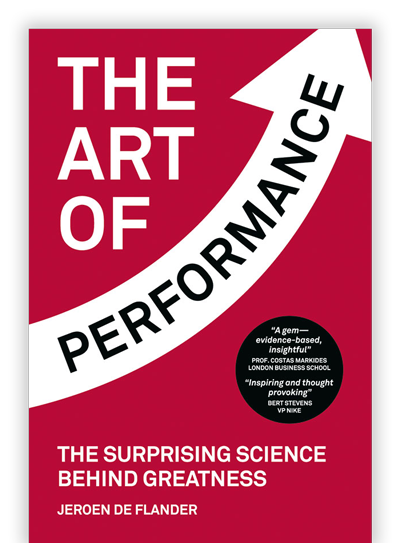A matrix structure: almost everyone has one, most managers find matrix structures complex. And it’s hard to find no-nonsense advice on the topic.
This mini guide covers the basics of matrix structures but also offers practical tips how to thrive in any matrix organization.
You can go directly to these chapters about matrix structures:
- Matrix structure: a definition
- Matrix structure: advantages
- Matrix organizational structure: 11 tips

Matrix organizational structure: a definition
Let’s take a closer look at a short definition first before I give you some practical advice how to successfully run a matrix organization.
As defined in the business dictionary, a matrix structure is an organizational structure that facilitates the horizontal flow of skills and information. It is used mainly in the management of large projects or product development processes, drawing employees from different functional disciplines for assignment to a team without removing them from their respective positions.
Employees in a matrix organization report on day-to-day performance to the project or product manager whose authority flows sideways (horizontally) across departmental boundaries. They also continue to report on their overall performance to the head of their department whose authority flows downwards (vertically) within his or her department.
In other words: you have two bosses in a matrix structure. Ouch!
The advantages of a matrix structure
A matrix structure is often introduced to enhance the product focus within an organisation – in addition to the traditional profit and loss management, often organised geographically. But while the underlying idea is good, poor execution makes malfunctioning matrix structures one of the most frustrating aspects (read: performance killers) in many large organisations.
“But isn’t there something that can be done about it?” you might ask yourself.
Unfortunately, there is no magic formula to make a matrix structure work 100 percent of the time because each organizational choice brings disadvantages. But most organizations can make a big leap forwards by putting some of the following actions into practice.
Survive a matrix structure: 11 tips

1. What would you like to achieve with the matrix structure?
A simple question, wouldn’t you agree? But most CEOs fail to answer it. Yes, they will have a phrase ready such as “This matrix structure enhances our product innovation strategy” or “The new matrix organizational structure is the result of a strategic study done by an external consultant”. But that’s not enough. A matrix structure only adds value when its objectives are crystal clear.
See if you can find the objectives in writing. If you can’t, consider this a priority as clear matrix goals are crucial to get the new organization up and running.
2. Mastering the matrix = organizational design
Managing a matrix structure is not easy. It requires a careful organizational balancing act within an environment that is changing constantly. Many leaders use a one-on-one approach to steer the leadership team in the right direction. But this approach isn’t such a smart one. While it might work, it requires lots of time and reinforces a hidden political game that is centered around you.
So unless you are a power-driven, egocentric individual, you might want to consider going for a structural solution. And this structural solution is a professional organizational matrix design that includes, in writing:
- the matrix structure ambitions
- the dos and don’ts on a macro level for each of the players involved
- the impact on the business/decision processes on the matrix organizational structure
- a list of organizational disadvantages the matrix creates and how to deal with them
3. Matrix structures: include size and growth rate in the equation
Organizational units come in different sizes and have different growth rates. You can have a solid 750-strong organizational structure in Germany growing steadily at two percent a year or a team of 50 in China doubling in size every 12 months. The functional line can add a lot of value to the geographical but only if the service is adapted to the needs of the recipient. And the support a mature organization wants is quite different from a fast-growing smaller unit. So make sure the functional matrix lines offer services adapted to the size and growth rate of the receiving geographical units.
4. Dare to change the power balance in the matrix
The financial crisis has forced many organizations to reduce costs. I have talked with quite a few senior executives over the past months who told me that they struggled a lot with the question: “What to do with our matrix structure in these times of crisis” and admitted that the reflection process largely reduces the speed of decision making.
The truth is that new challenges often demand new organizational structures. In cost-cutting mode for example, it’s easier to get quick results if the geography – country or region – takes the lead in the organization as opposed to the product lines.
So don’t be afraid to shift the power balance. Take proactive measures. You might step on a few egos but that’s part of the job.
5. Improving the matrix: a necessary topic at your next management team meeting
Whether you are in a corporate role or in the field, whether you are high or low on the hierarchical ladder, whether you like it or not, your job, and those of your team members, are impacted by the matrix organizational structure. Members of the same team will face the same organizational challenges so it’s worthwhile to put it on your agenda and acknowledge its importance. Put it on the execution agenda and take concrete actions to improve.
6. Rotate people within the matrix structure
This is not new and probably the tip in this list best-known by most leaders. When an individual has worked ‘on the other side’, s/he will be much more receptive to matrix sensitivities and therefore much more likely to deal with them in a positive way. But while most managers know this, only few companies take full benefit of explicit career moves between the different sides of the matrix structure.
7. Steer projects together
In a matrix structure, people tend to dump things on to the other side. And this behaviour creates a lot of anxiety and distrust – two feelings you don’t want to stimulate as a leader. Most best-practice matrix structures start with a pragmatic program management office on neutral ground. One that helps with project communication resource planning and project launch towards both sides of the matrix organization.
8. Take care of strategic planning
The sides of the matrix are like the plug and the socket. They fit together very well but need some help. This is done best during the yearly planning cycle as, in the long-term, strategic plan problems with the operating model almost always stay hidden. So take the time needed on a yearly basis to connect the plug and the socket. All parties involved should work together and sign off on next year’s project portfolio. These joint signatures will dramatically reduce noise on the line later on.
9. Matrix structures: relationship-building takes time
You will probably agree that face-to-face interactions are better for creating good business relationships. Try to reduce the job changes in the head office. In many organizations, people are already on the move again before the benefits of the newly built relationship kicks in. Don’t make this mistake. Keep your key people in place until the matrix organizational structure is up and running for at least 1 year.
10. Matrix structures: learn to live with it!
A matrix structure can have enormous benefits for an organization as a whole but it won’t please all people all the time. And it doesn’t help to pretend it will.
“You can fool some people sometimes but you can’t fool all the people all the time,” said Bob Marley. A quote he picked up from Abraham Lincoln.
And they were right. So don’t try to hide the disadvantages of your organisational structure. Recognize them instead. Most people will see them anyway. Communicate the pros and cons and teach people how to live within the new organizational structure. And make sure you add the following line into your communication: a matrix structure is not an excuse not to perform!
“A matrix structure is not an excuse not to perform!”
11. Who’s the boss?
In the end, most people will evaluate the real power of a matrix organizational structure based on who impacts their performance evaluation and career development. Remember this human psychology when designing structures and detailing organizational models. Your matrix model might work perfectly on paper, but as long as the performance evaluation process does not reflect the desired function, it will remain a dream on paper.
Like this article about matrix structures?
Want to inspire others?
Share it now!



